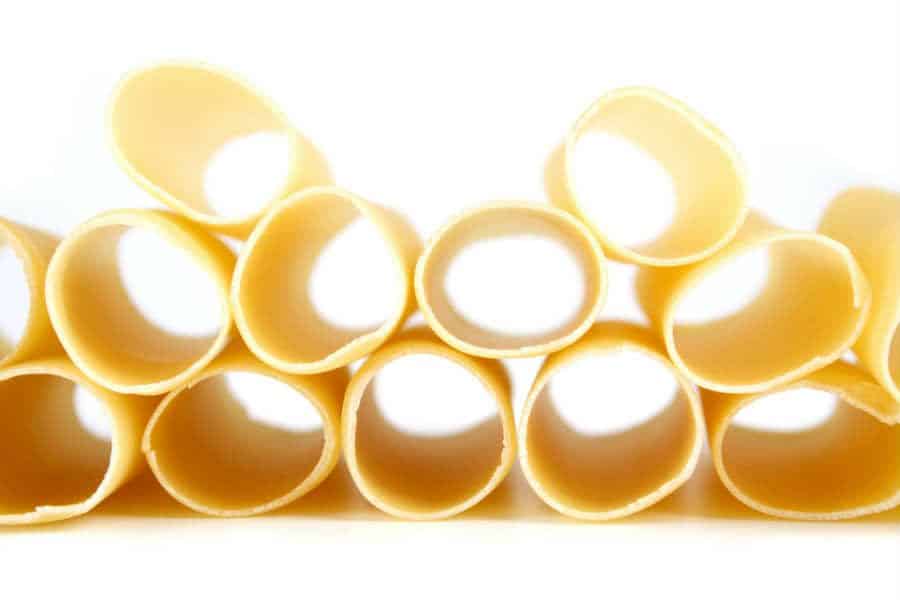Cannelloni VS Manicotti: What’s the Difference?

Ever been to an Italian-American restaurant, read the descriptions of their pasta dishes, and wondered what the difference between manicotti and cannelloni really was? Both are stuffed, tubular pasta dishes, so why are they not the same thing? Turns out there is a noticeable difference!
Cannelloni
Baked cannelloni is a favorite in many Italian-American restaurants, and is well known as a cylindrical pasta, stuffed, smothered in sauce, and baked. If you have ever made a cannelloni dish at home, you probably purchased the tubular pasta from a grocery store, cooked them, and tediously inserted filling before adding sauce over the top.
In contrast, traditional cannelloni is prepared from a rectangular piece of pasta. After cooking the rectangular pieces, and adding a few tablespoons of filling to the top, you simply roll the pasta into the desired tube, add the topping, and bake. If you would prefer preparing your cannelloni dishes using flat pasta instead of tubes, some chefs recommend trying your recipes using flat lasagna noodles.
Manicotti
Manicotti is well known in the United States as a tubular pasta usually served stuffed and baked, similar to cannelloni. The noodles are cooked, stuffed, and covered in sauce in almost the exact same way. Manicotti pasta is also sometimes sold in stores as shells instead of tubes, which can make stuffing them somewhat easier.
However, traditional manicotti is not actually a pasta. Authentic manicotti is made with crepes, not pasta, that are filled and baked. The thin crepes required for what in the United States is known as manicotti must even be made differently, in crepe pans (rather similar to the pans used to make tortillas). In Italy, manicotti would not be served as a pasta dish but as a crepe dish, or a crespelle.
What it Takes to Make Crepes
If you’re feeling adventurous, you can make your own crepes for traditional stuffed crepes (or “manicotti”) at home. Most crepe recipes have only six ingredients, most of which you might already have on hand. All it takes for a simple batter is flour, salt, eggs, butter, milk, and water, and the preparation generally takes only 10 to 15 minutes.
Once you’ve made and mixed the batter, cooking the crepes is just like making pancakes and can be done in a frying pan if you don’t have a crepe pan available. If you want thin crepes, which are best for manicotti, you can tilt and swirl the pan so that the batter spreads out in a thinner coating than pancakes. Each crepe only takes about 4 minutes to cook (2 minutes on each side) before it is ready. They can be served hot by themselves, or allowed to cool and used for dishes such as manicotti.
Today in the United States most cookbooks, and even some restaurants, use the terms “cannelloni” and “manicotti” interchangeably. Besides the different fillings and sauces, they may even be made from the same noodles. However, in traditional Italian cuisine, as you’ve seen, these dishes are quite different.
Interested in checking out the difference for yourself? Visit Italian Garden, located in San Marcos, TX.

